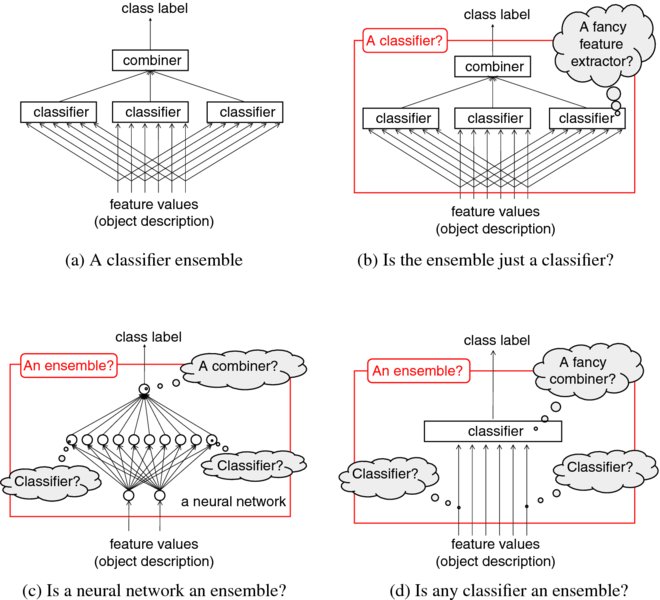3 AN OVERVIEW OF THE FIELD
3.1 PHILOSOPHY
A classifier ensemble is sketched in Figure 3.1a. Several classifiers are employed to make a classification decision about the object submitted at the input, and the individual decisions are subsequently aggregated. The output of the ensemble is a class label for the object.

FIGURE 3.1 What is a classifier ensemble?
Classifier ensembles are justly receiving increasing attention and accolade and generating a wealth of research [53, 183, 311, 321, 335, 355, 357, 397, 425, 439]. Theoretical and empirical studies have demonstrated that an ensemble of classifiers is typically more accurate than a single classifier. Research on classifier ensembles permeate many strands of machine learning including streaming data [160, 326], biometrics [312], concept drift, and incremental learning [119].
Intuitive as this concept may be, there is no rigorous definition of a classifier ensemble. Figures 3.1b–d illustrate the uncertainty of the generic definition. Any classifier ensemble is, in fact, a classifier (Figure 3.1b). We can think of the constituent classifiers (called “base classifiers”) as fancy feature extractors, while the combiner would be a simple classifier that aggregates the “fancy features.” On the other hand, what is stopping us from proclaiming that a standard neural network classifier is a classifier ensemble (Figure 3.1c)? The neurons ...
Get Combining Pattern Classifiers: Methods and Algorithms, 2nd Edition now with the O’Reilly learning platform.
O’Reilly members experience books, live events, courses curated by job role, and more from O’Reilly and nearly 200 top publishers.

